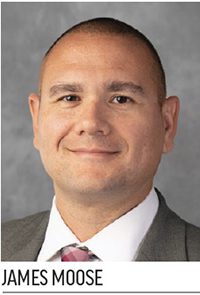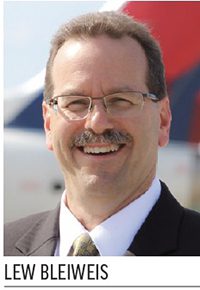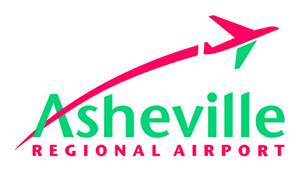Construction projects are often all about numbers, and recent airfield improvements at Asheville Regional Airport (AVL) in North Carolina has some doozies. The four-phase project to replace a 50-plus-year-old runway was supposed to take five years. Instead, construction issues added three years and $40 million to the original budget.
Construction projects are often all about numbers, and recent airfield improvements at Asheville Regional Airport (AVL) in North Carolina has some doozies.
The four-phase project to replace a 50-plus-year-old runway was supposed to take five years. Instead, construction issues added three years and $40 million to the original budget.
The final project—a new replacement runway and a second parallel taxiway—was completed in 2021.
Adding further perspective, Executive Director Lew Bleiweis, AAE, notes that the original need for improvements surfaced in 2008 when pavement condition testing confirmed that the airport’s single runway was on a rapid path toward failing within a few years.
|
Project: Replacement Runway; Parallel Taxiway Location: Asheville (NC) Regional Airport Project Name: SOAR – Significant Opportunity for Aviation and the Region Scope: Reconstruct primary runway (new pavement, drainage, mechanically stabilized earth retaining wall system, airfield electrical systems, NAVAIDs) & correct multiple modifications of standards; construct temporary runway that now serves as permanent parallel taxiway Cost: $115 million Funding Sources: FAA Airport Improvement Program; NCDOT Division of Aviation, Airport Funds Design: Began in 2011 Construction: 2014-2021 Engineer of Record: AVCON Engineers & Planners Inc. Construction & Program Manager: RS&H, Inc. Temporary Runway Site Prep: Thalle Construction Co. Inc. Temporary Runway Paving, Lighting & NAVAIDs: Harrison Construction Corp. Permanent Runway Site Prep & NAVAIDs: GLF Construction Corp.
Permanent Runway Paving, Lighting Major Lighting Supplier: ADB SAFEGATE Asphalt Supplier: Harrison Construction Corp. Retaining Wall Manufacturer: Tensar |
As bad as the runway surface was, it wasn’t the only problem. The runway’s electrical system also needed repairs, and, more importantly, AVL needed to bring the runway up to current safety requirements. Pressing needs included fixing a line-of-sight issue caused by a hump in the runway and increasing runway-taxiway separation to comply with updated FAA regulations.
When airport officials proposed the runway replacement project to FAA, the agency initially suggested shutting down the airfield for six to nine months during construction. “It was a legitimate proposal to some degree,” Bleiweis says. “But when we talked to the airlines, they basically told us if they would have to pull out of the market for six to nine months, they were not coming back.”
Temporary Runway Leads to Permanent Solution
Bleiweis reported back to the FAA that the airlines providing service to the airport at the time (AirTran Airways, American, Continental, Delta, United and US Airways) were definitely not on board with the original strategy, and opened discussions about other options. “An extended runway closure was something we really couldn’t do, so we had to look at some alternatives,” he explains.
The option that ultimately prevailed was building an alternate taxiway parallel to the existing runway, and building it wide enough so it could be used as a temporary runway while the permanent runway was being reconstructed.
Airport officials were hopeful when development for the project began in 2008, but were somewhat deflated by delays that stretched the process into 2013. During that time, the runway continued to deteriorate so much that Mike Reisman, AVL’s executive deputy director, coined the term “cup of runway” because maintenance personnel were picking up small pieces of asphalt during daily pavement inspections, and there was always enough to fill a cup. “Like anything else with the FAA, you need a lot of runway—no pun intended—because it takes a long time to get projects moving,” Bleiweis remarks.
So, while AVL waited for the green light, it took action to maintain safety. Interim measures included a full seal coat and asphalt rejuvenation project to eke a few more years of life out of the runway.
The FAA signed off on the plan in 2011 but required it to be executed as four separate projects. “Normally, the FAA will let you design, bid and build a project like this at one time,” Bleiweis says. “For budgetary reasons, they required us to break the program up into four separate segments.” Each phase was slated to take about a year.
Given the scope and structure of the project, Bleiweis knew the airport needed to pick its project team carefully. RS&H, the firm that performed the original runway condition reporting work, was selected as the primary consultant responsible for program management, and AVCON served as the engineer of record. “We knew we were in for a major project, so part of the criteria when we selected them was in how they would tackle the project, how they’d oversee it, how they put it all together,” says Bleiweis.
 Phasing the project was definitely a planning puzzle, notes James Moose, P.E., regional manager for AVCON. “We knew what we wanted to get to, we just had to dissect it to determine what all the pieces were, implement the design, and then develop the scopes for the construction based on the available funding in a way that allowed us to keep the airfield open,” he explains.
Phasing the project was definitely a planning puzzle, notes James Moose, P.E., regional manager for AVCON. “We knew what we wanted to get to, we just had to dissect it to determine what all the pieces were, implement the design, and then develop the scopes for the construction based on the available funding in a way that allowed us to keep the airfield open,” he explains.
Off to a Smooth Start
The first phase of the project—site prep and drainage for the temporary runway/permanent taxiway—got underway in 2014. The airport had to add 671,000 cubic yards of dirt to level the site of the new temporary runway. Precautions had to be taken during construction because the site was on top of an area previously filled with coal ash, which AVL received from Duke Energy in 2009. The material is enclosed within a heavy-duty liner, creating what Nick Loder, senior aviation engineer with RS&H calls a “coal ash burrito” with a 5-foot soil cap on top.
“Any time we had any excavation around the coal ash liner, we had to use extreme care, and make sure the contractors were aware of the liner,” explains Loder. A puncture would have brought the project to a standstill for Duke Energy to investigate and repair it—plus the possibility of involvement by state environmental authorities. Ultimately, AVL’s caution and perseverance paid off, and no punctures occurred.
Other prep work for the temporary runway included laying 11,900 linear feet of drainage pipe; installing 72 drainage structures, digging seven temporary sediment basins, installing 4,200 linear feet of fencing, and seeding 150 acres for grass.
The other primary component of Phase 1 was building a 1,200-foot-long, 38-foot-high retaining wall and filling in an area to establish the glideslope-critical area for the temporary runway. “The theme on this project was keeping the NAVAIDs active throughout construction,” Loder muses. “This is a single-runway airport in the mountains with low IFR conditions almost every day. To maintain air carrier operations, we had to protect the ILS-critical areas for the localizer and glideslope throughout the program.”
To save costs during the initial stages of work, the FAA permitted AVL to make the permanent taxiway/temporary runway 100 feet wide and 7,000 feet long—50 feet narrower and 1,001 feet shorter than the original runway. This size made it easy to convert it into a 75-foot-wide permanent taxiway with 12 1/2-foot paved shoulders on each side. The project team also installed electrical conduit on either side of the pavement during Phase 1. When the temporary runway was later converted to a taxiway, crews simply pulled all the electrical cabling and installed taxiway lights without having to compromise the integrity of the pavement.
Overnight Construction Windows
Phase 2 was performed in 2015 and included paving, lighting ILS/NAVAIDs installation for the permanent taxiway/temporary runway. With that work complete, AVL shifted operations from the main runway to the temporary runway.
To maintain airfield safety, construction work on the taxiways and connectors only occurred after daily operations had ceased—from midnight to 5:30 a.m. The project team also worked within a narrow window to switchover from old to new runway once paving was complete. On the night of Dec. 9, 2015, the 50-year-old runway was closed to traffic around 10 p.m., and the new temporary runway was in service about eight hours later.
A regular schedule of short, overnight construction windows required close communication with the airlines and the area’s large general aviation community. “Throughout the project, there were periods when we would lose all electronic instrumentation for the runway, so it became more of a VFR runway,” Bleiweis says. “There were days we had to cancel flights because the weather was bad. And there were times when American and Delta had to cancel their last flights out of Atlanta and Charlotte because our airport would already be closed by the time they would have been in the air coming here.”
Coordination & Control
In 2016, Phase 3 got underway with the demolition, grading, prepping the subgrade for pavement and site work needed to reconstruct the original runway. Although the temporary runway was in service, there were still active crossovers through the old runway. This required careful construction phasing to ensure that aircraft could get where they needed to go.
 To enhance safety, the project team required the contractors to use taxiway crossing guards and took an active role in the process. “We developed specifications to ensure the crossing guards were qualified,” Loder specifies. “They had to be airport-approved, airport-trained and heavily vetted. Crossing guards had to be very alert and capable of radio communications with air traffic control, while directing construction traffic across taxiways during daytime and overnight construction.”
To enhance safety, the project team required the contractors to use taxiway crossing guards and took an active role in the process. “We developed specifications to ensure the crossing guards were qualified,” Loder specifies. “They had to be airport-approved, airport-trained and heavily vetted. Crossing guards had to be very alert and capable of radio communications with air traffic control, while directing construction traffic across taxiways during daytime and overnight construction.”
Originally, the crossing guards were outfitted with handheld radios and protective gear; but the project team quickly learned that they needed additional tools to be the most effective. Specifications for subsequent phases included small guard shacks that protected personnel from the elements yet enabled them to maintain situational awareness through windows and radios. Shacks were equipped with power sources for the radios.
One of the most challenging aspects of Phase 3 came when the installation of the Medium-Intensity Approach Light System with Runway Alignment Indicator Lights (MALSR) system and localizers was moved up from Phase 4. Essentially, crews installed those systems to a runway that didn’t exist. “We had to really be involved boots on the ground with very tight survey control,” Loder recalls. “When you complete one project with one surveyor, and then bring in a second contractor to build to another surveyor’s control, that’s typically a recipe for trouble.” But with close coordination between RS&H, the airport and the contractors, the project team set benchmarks and control points in the field that enabled them to make sure the survey control stayed constant and was verified each year. “I will say, it was a relief when we finally paved the permanent runway, I stood on the centerline and all the MALSR lights lined up,” he acknowledges, only half-jokingly.
Rounding Third
With the first three phases of the project completed on schedule and within budget, the team was entering the home stretch…or so they thought. Phase 4—paving and electrical for the permanent runway—was supposed to be finished in 2017. But a series of issues, which required the Authority to bring in the surety, caused the final phase to fall three years behind schedule.
It turns out that the FAA’s requirement to execute the project as four separate projects had created a huge challenge. “We had to bid each project separately, and depending on work demand in the region, we didn’t necessarily get the same contractor for each of the four phases,” Bleiweis explains. That created a lack of continuity and accountability from phase to phase.
 With different contractors doing different work on different phases, the situation was rife with potential for finger-pointing. “If something goes wrong, which phase did it happen in? Which contractor would be responsible?” Bleiweis relates. “Coordinating and completing punchlists for work completed by separate contractors through each phase added additional headaches to an already complicated program. Having one contractor during the whole project could have saved a lot of those issues,” he adds.
With different contractors doing different work on different phases, the situation was rife with potential for finger-pointing. “If something goes wrong, which phase did it happen in? Which contractor would be responsible?” Bleiweis relates. “Coordinating and completing punchlists for work completed by separate contractors through each phase added additional headaches to an already complicated program. Having one contractor during the whole project could have saved a lot of those issues,” he adds.
The issue not only caused delays, but also cost the airport millions. Bleiweis notes that the original project estimate was $65 million, and the FAA committed to fund $50 million. Early issues such as regional labor shortages and the need to split work to synchronize with available funding increased the initial estimate to $75 million. Then, after encountering difficulties in the last phase, the final cost came in close to $115 million. The airport used its own cash reserves to cover most of the increases, with additional funds coming from passenger facility charges and a portion of AVL’s first CARES Act grant.
Final Approach
When the project was finally completed in 2021, the airport had raised the south end of the runway 7 feet to solve its line-of-sight issue, and the new taxiway and runway now meet FAA standards for separating center lines to ensure safety margins between airplanes on the taxiway and those taking off and landing on the runway. The new runway is expected to last 40 to 50 years.
During the delay-plagued project, AVL had a record year when it served 1.6 million passengers in 2019—before the permanent runway even opened. Halfway through 2022, traffic is on a trajectory to exceed that record.
Moose attributes much of the project’s ultimate success to the core team’s collaboration. “We had to work very closely together so that everyone understood what actually had to be constructed for each phase and how much money we had,” he remarks. “It was really a collaborative effort to keep the construction moving but keep the airfield open.”
Bleiweis also credits Reisman, who oversaw the project for AVL. “He’s the one who lived it day-to-day for the whole seven years, especially the last three years when we were all dealing with a project that kind of went sideways for a period of time.”

Lessons Learned
Moving forward, the airport has changed one important practice Bleiweis suspects other airports might want to adopt. “One of the things we learned is that there was no language in the bond that prevented the surety company from rehiring a contractor that was underperforming,” he explains, noting that’s exactly what happened in Phase 4. Now when drafting bid documents, AVL makes sure its bond language explicitly says the surety company can’t rehire an underperforming contractor. “We’ve been doing it this way now for several years, and no contractor has denied work and no surety has rejected putting that language into the bond,” Bleiweis reports.
Speaking from the engineering firm’s point of view, Moose learned some lessons he’ll carry forward to future projects, too. “This project really forced the whole team to come together and work through a lot of the problems that this type of phased design creates,” he reflects. “I think it gave us all a different perspective, and really a better understanding of how these projects can develop in the future.”
Additional Improvement Ahead
There are a few more important numbers in this story. The new taxiway provides easy access to 40 acres of land suitable for aeronautical development on the west side of the airport. Before the taxiway was installed, there was no way to get aircraft to and from that valuable area. The control tower will be moved out of the existing terminal building and relocated there this year.
In addition, AVL—one of the nation’s fastest-growing airports—has announced plans for a $230 million project to more than double the size of its existing terminal from 113,000 to 275,000 square feet.


 facts&figures
facts&figures

